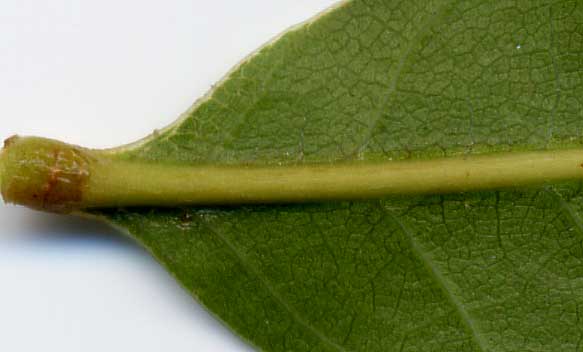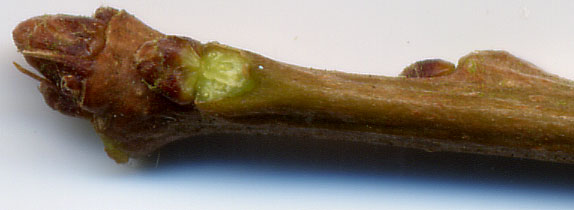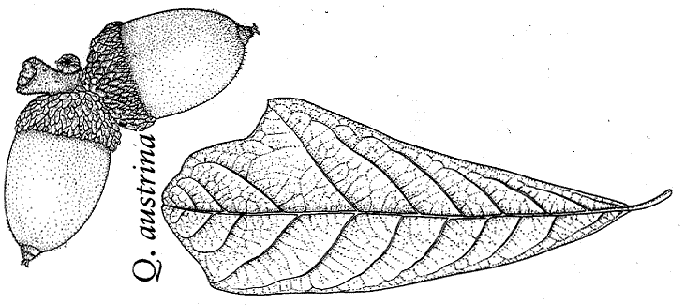| Quercus austrina | |
| Author | Small 1903 Fl. S.E. U.S. 353 1903. |
| Synonyms | durandii var. austrina (Small) E.J.Palmer 1945 |
| Local names | bluff-oak; bastard white oak; |
| Range | South
Carolina; Mississipi; Georgia; Florida; Alabama; from 0 to 200 m; |
| Growth habit | to 20-30 m tall; stout ascending branches; broad crown; |
| Leaves | 7-10
x 3-6 cm; elliptic to oboval; base cuneate, apex rounded, more or less
narrow; margin sinuate or with 3-7 shallow, rounded lobes; bright green,
hairless above; paler and velutinous but glabrescent beneath except along
veins; 4-8 vein pairs; petiole to 3-5 mm, hairless; |
| Flowers | |
| Fruits | acorn oval; solitary or paired; slightly hairy near apex; enclosed for 1/3 or 1/2 in cup; cup subsessile or on a stalk reaching 1.5 cm; scales weakly appressed, grey and smooth; maturing in 1 year; |
|
Bark, twigs and |
bark
pale and scaly, with broad ridges on old trunks; branchlets dark brown,
with prominent, corky, whitish lenticels; buds dark brown, pointed, pubescent,
3-5 mm long; |
| Hardiness zone, habitat | hardy
zone 5-6; prefers rich and moist soils or bluffs, along rivers; |
| Miscellaneous | --
Sub-genus Quercus, Section Quercus, Series Stellatae; (however is sometimes
confused with Q.nigra, Sub-genus Quercus, section Lobatae,
since leaves are remotely resembling); -- Threatened (IUCN Red List Category : VU). -- Often misidentified as Q.sinuata, but the latter has larger and more pointed buds, darker twigs, deeper cup, and mature leaves glabrous on both sides with deeper sinuses; |
| Subspecies and varieties |
|
| Pictures |
More pictures HERE
|


